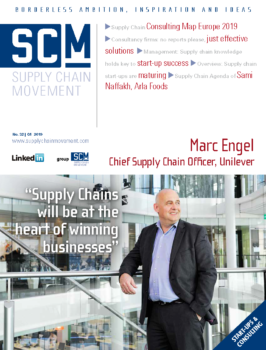Consultancy firms as breeding ground for innovation

Nowadays, a consulting project doesn’t end with the delivery of a report. Companies want concrete solutions that are based on their own data – solutions that will actually have an impact. This means that even consultancy firms are having to innovate, such as by investing in data science and technology or collaborating with partners, and that includes start-ups.
By Marcel te Lindert
Over recent years, a former mail sorting office in the central Berlin neighbourhood of Kreuzberg has been transformed into ‘Spielfeld Digital Hub’. The three-storey hub comprises 2,500 square metres of workspaces, meeting rooms, technology areas and kitchens. It is a breeding ground for collaboration, brainstorming and innovation between people from companies of all shapes and sizes, from start-ups to corporates. Spielfeld Digital Hub was founded by consultancy firm Roland Berger in conjunction with Visa. “It’s a place where tech firms, start-ups and venture capitalists come together. They form an ecosystem in which teams of people from different disciplines and different organizations can innovate together and where their innovations have the chance to mature. This is the new way of working,” says Michael Pleuger, senior partner at Roland Berger, a consultancy firm with German roots that currently employs 2,500 consultants worldwide.
Many consultancy firms are struggling to cope with the changing market and that new way of working. Their complex governance structures create long-drawn-out decision-making processes. It can take a lot of time and effort to free up extra budget or capacity internally for an innovative development. That wasn’t such a big problem back in the days of lengthy consulting projects and hefty reports, but today’s companies want effective solutions rather than reports – and preferably quickly. “A digital procurement platform, for example. One that results in a new business model. Roland Berger operates as a single organization which reduces internal competition and improves agility.”
Digital procurement platform
The digital platform Pleuger is referring to is one that he and his team developed for a large international company which enlisted their help to further digitalize its purchasing department. “The company had already implemented all kinds of procurement solutions to some extent, from e-sourcing and e-auction to supplier and contract management, so we held a series of workshops with the company to explore its future purchasing-related expectations. It turned out that the company needed a solution that didn’t exist yet, which is why we developed one ourselves.”
The solution comprises a digital procurement platform for strategic category management. As an example, Pleuger mentions the technological advancements that could create disruption for many product categories: “Such as the introduction of 5G for telecom companies. The platform enables category managers to gather all the relevant information for their product category from all over the world – internal information such as regional demand patterns, the origin of products or the risks associated with them. As the basis for this, the platform generates questionnaires that can be sent to all the company’s facilities worldwide. But it’s also about external information such as news items, which can be automatically categorized using artificial intelligence. This means that the information is received in a much more structured manner.”
The traditional consulting project is not dead yet, “but there’s an unmistakable trend towards results-driven, asset-based consultancy,” states Pleuger. “A place like Spielfeld Digital Hub sparks truly fresh ideas, unencumbered by traditional project methodologies based on best practices. It brings together different perspectives on challenges, and people are allowed to make mistakes when developing solutions to them.” … … …
 Want to read more?
Want to read more?
Subscribe to the digital subscription to read the full version >>
or
select one of our annual or digital subscriptions to receive the next issue >>
This article was first published in Supply Chain Movement 32 | Q1 – 2019










